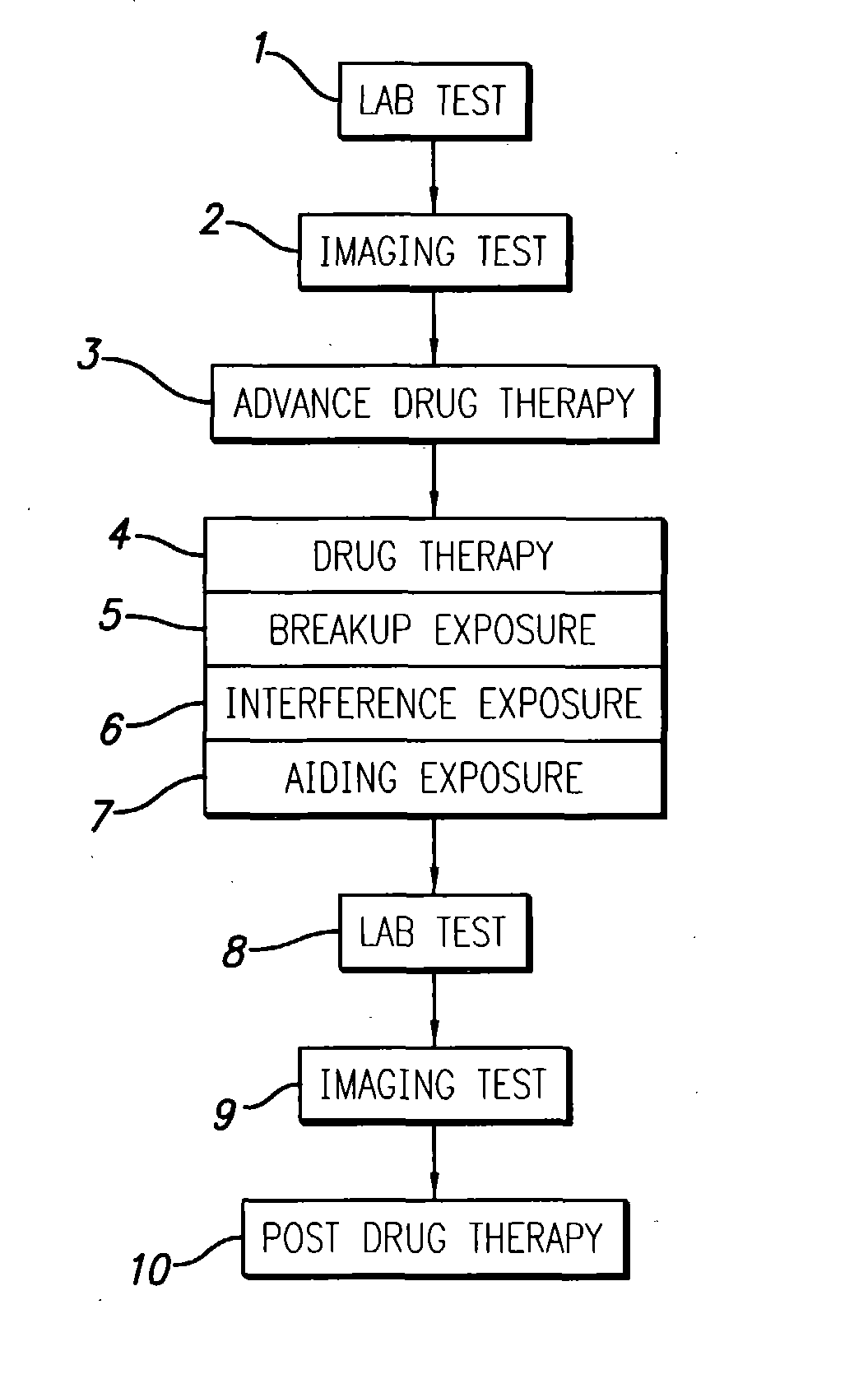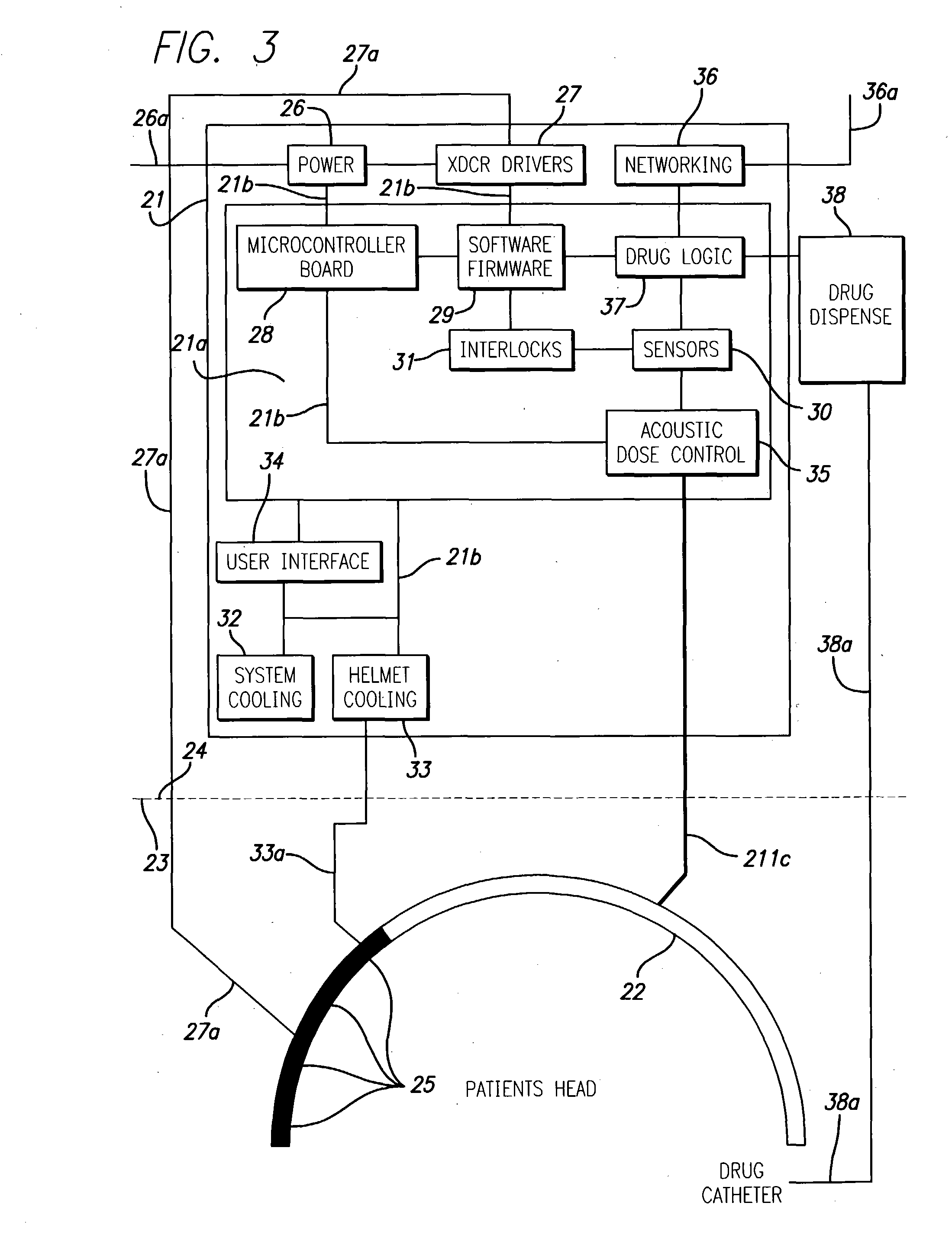System and methods for treatment of alzheimer's and other deposition-related disorders of the brain
a brain disorder and alzheimer's technology, applied in the field of system and methods for treating alzheimer's and other deposition-related disorders of the brain, can solve the problems of increasing the level of care, the care of patients is a huge psychological and financial challenge for their caretakers, and the loss of work time of caretakers is another cost to our economy, so as to slow down the cognitive loss process, slow down the patient's cognitive loss, slow down the effect of stopping
- Summary
- Abstract
- Description
- Claims
- Application Information
AI Technical Summary
Benefits of technology
Problems solved by technology
Method used
Image
Examples
example 1
Patient Showing Initial Signs of Alzheimer's Processes
[0101] The tests and treatment sequence are as follows:
[0102] Pre-Therapy lab-test(s) indicate early Alzheimer's processes active, low burden;
[0103] Session 1 (interference with amyloid formation using a drug plus ultrasound);
[0104] Lab-Test(s);
[0105] Session 2 (interference with amyloid formation using a drug plus ultrasound);
[0106] Lab-Test(s);
[0107] Session 3 (interference with amyloid formation using a drug plus ultrasound);
[0108] Lab-Test(s); and
[0109] Continued drug therapy for interference and / or breakdown and / or peripheral cell benefit.
[0110] This first example shows a patient whose pre-therapy lab-test(s) indicate a very early stage of undesirable plaque formation. Herein, it is decided that the undesirable plaque processes must be stopped / slowed (interfered with), but the current light-plaque burden does not necessarily need to be physically removed, at least not immediately removed. Thus, three one-hour therapy session...
example 2
Patient Showing a Significant Plaque Burden
[0111] The tests and treatment sequence are as follows:
[0112] Pre-Therapy lab-test(s) indicates ongoing deposition processes and significant burden;
[0113] Pre-Therapy fMRI to establish plaque burden extent and distribution, functional losses, and any possible impediments to acoustic penetration;
[0114] Session 1 (breakup of amyloid plaque using a drug plus ultrasound);
[0115] Lab-Test(s);
[0116] Session 2 (breakup of amyloid plaque using a drug plus ultrasound);
[0117] Lab-Test(s);
[0118] Session 3 (breakup of amyloid plaque using a drug plus ultrasound);
[0119] Lab-Test(s); and
[0120] Continued drug therapy for interference and / or breakdown and / or peripheral cell regrowth and recovery.
[0121] This second example depicts a patient whose pre-therapy lab-test indicates an advanced stage of plaque formation and so it is more thoroughly assessed using an fMRI and / or MRI brain scan. It is decided that at a minimum the considerable deposits need to be ph...
PUM
 Login to View More
Login to View More Abstract
Description
Claims
Application Information
 Login to View More
Login to View More - R&D
- Intellectual Property
- Life Sciences
- Materials
- Tech Scout
- Unparalleled Data Quality
- Higher Quality Content
- 60% Fewer Hallucinations
Browse by: Latest US Patents, China's latest patents, Technical Efficacy Thesaurus, Application Domain, Technology Topic, Popular Technical Reports.
© 2025 PatSnap. All rights reserved.Legal|Privacy policy|Modern Slavery Act Transparency Statement|Sitemap|About US| Contact US: help@patsnap.com



